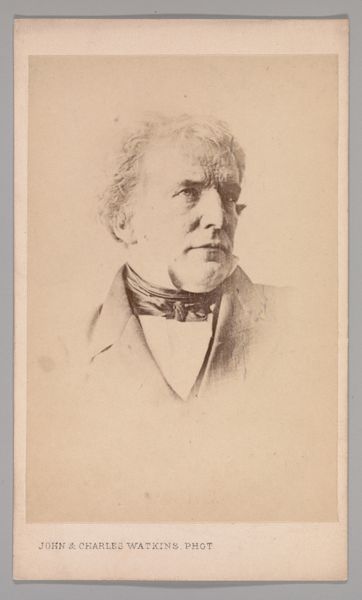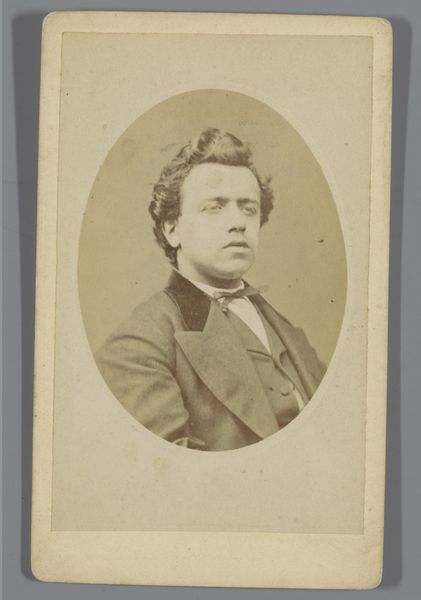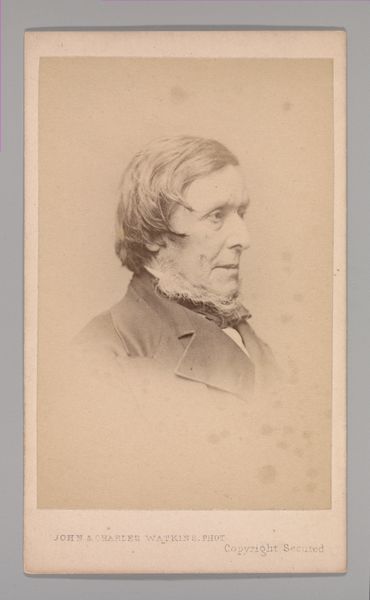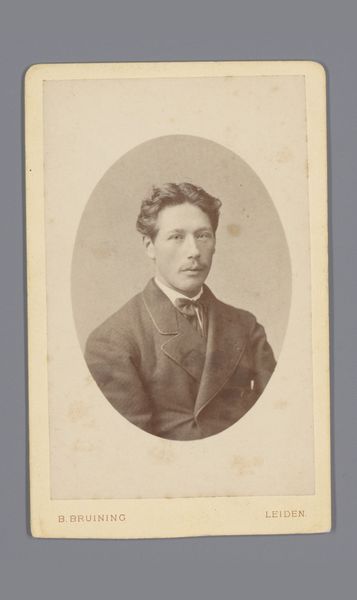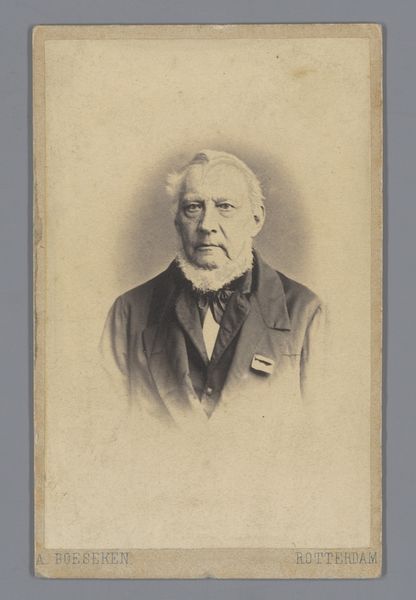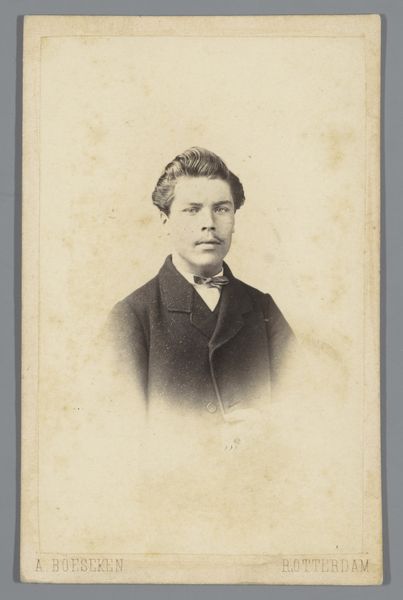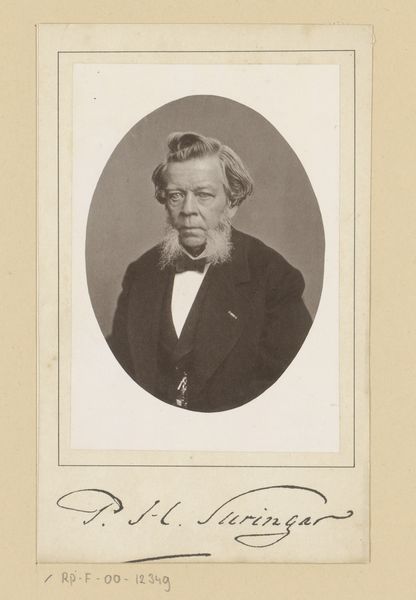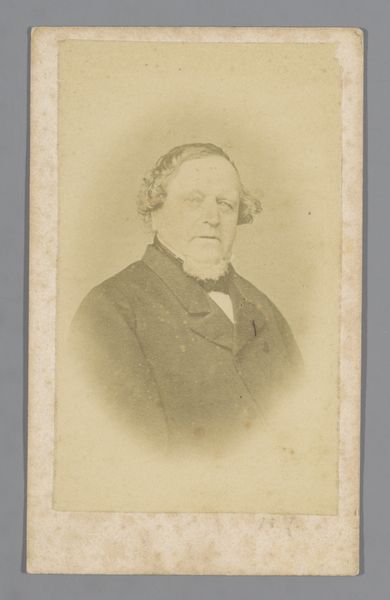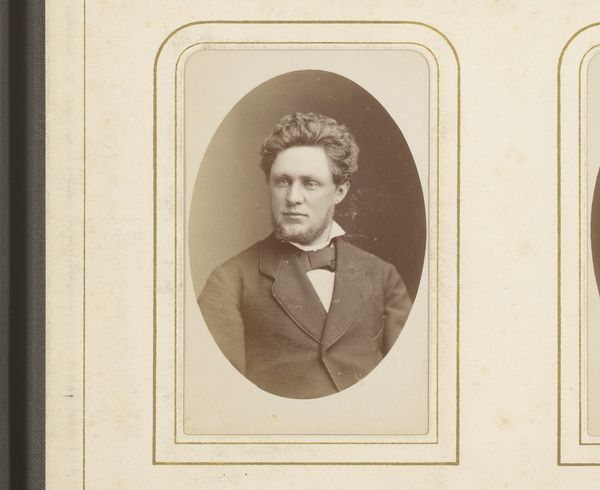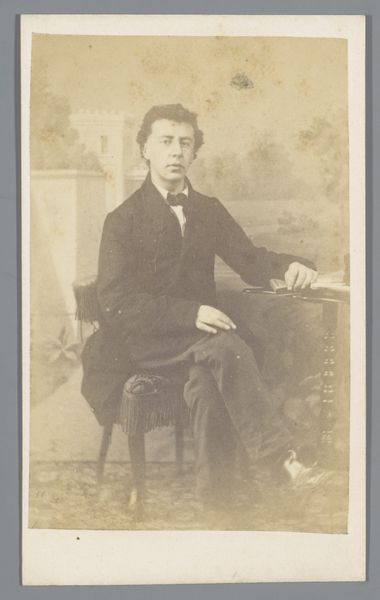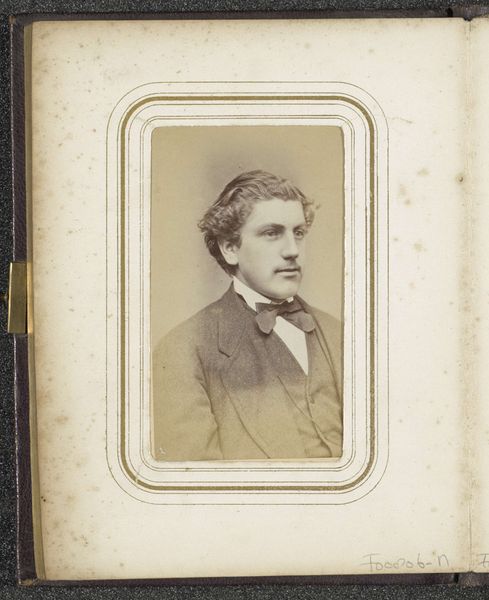
photography, gelatin-silver-print
#
portrait
#
photography
#
framed image
#
white focal point
#
gelatin-silver-print
Dimensions: height 100 mm, width 62 mm
Copyright: Rijks Museum: Open Domain
Editor: This is an intriguing portrait, "Portret van een onbekende man," a gelatin silver print from somewhere between 1864 and 1872 by J. Korsten. There's something striking about the directness of his gaze and the somewhat formal presentation, yet it feels quite intimate due to the photographic process. What stands out to you about this piece? Curator: Immediately, I'm drawn to the process. We need to consider the socio-economic implications of early photography. Gelatin silver prints, especially as cartes-de-visite like this, democratized portraiture. No longer the sole domain of the wealthy, portraiture became accessible to a wider middle class. Consider the labor involved: from the photographer and their studio assistants, to the suppliers of chemicals and paper. What were the working conditions like? How did this emerging industry shape social perceptions of representation? Editor: So, the material itself tells a story about shifting social structures? Curator: Exactly. The materiality dictates the context. Think about the consumption of these images. These cartes-de-visite were traded and collected. People kept them in albums, creating visual genealogies and asserting their place within a social fabric now woven with mechanically reproduced images. Editor: That's a really interesting way to look at what otherwise seems like a very straightforward portrait. I was so focused on the individual, I hadn’t considered the industry behind it. Curator: Don’t underestimate the power dynamics. The subject here adopts a very specific posture, dictated partly by photographic limitations, but also by social convention. How complicit was he in constructing this image of himself for public consumption and circulation? Editor: I hadn't considered how much 'work' goes into posing. I see this piece in a completely different light now, beyond just aesthetic qualities. Curator: Indeed. It compels us to see art as entangled in material conditions, labor, and power structures.
Comments
No comments
Be the first to comment and join the conversation on the ultimate creative platform.
